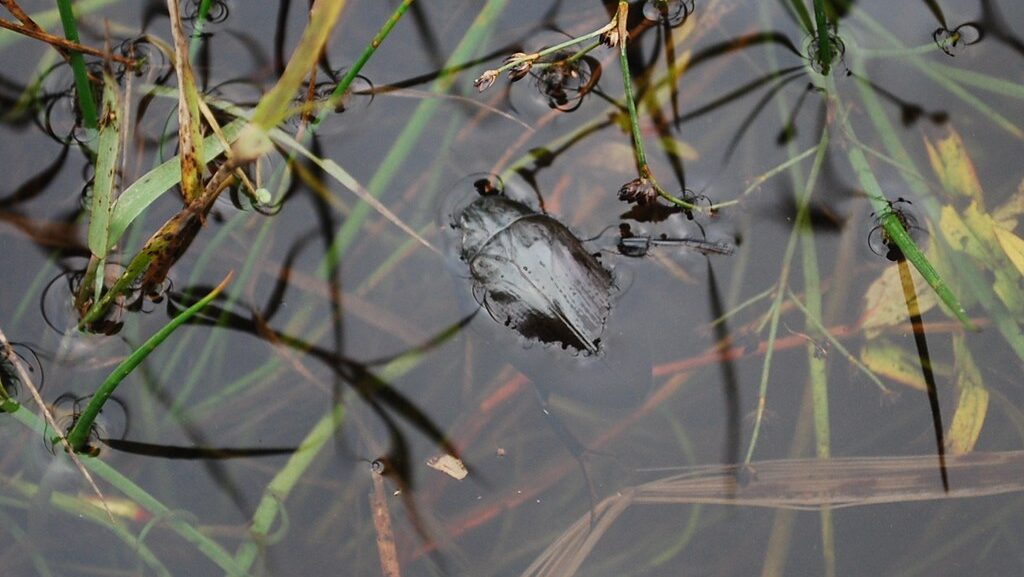
In the intricate web of ecological relationships, carnivorous insects serve as nature’s own pest control specialists. These fascinating creatures have evolved remarkable hunting strategies and adaptations that enable them to capture, kill, and consume various pest species that would otherwise damage crops, spread diseases, or multiply unchecked. From the lightning-fast strikes of praying mantises to the underwater hunting prowess of predaceous diving beetles, carnivorous insects play a crucial role in maintaining ecological balance. Their natural pest management services save global agriculture billions of dollars annually while reducing the need for chemical pesticides. Let’s explore the diverse and effective ways these beneficial predators help keep problematic insect populations under control.
The Ecological Role of Insect Predators
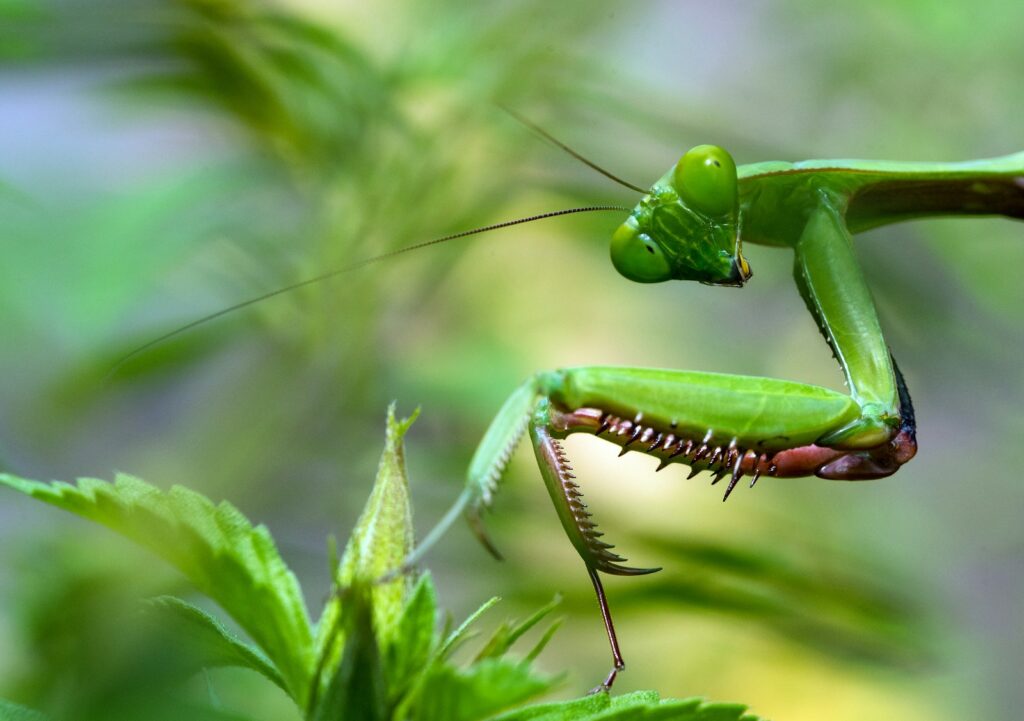
Carnivorous insects occupy a critical position in most terrestrial and aquatic food webs as natural regulators of herbivorous insect populations. These predatory species prevent explosive growth of potential pest species through direct predation, creating what ecologists call “top-down control” in ecosystem dynamics. Without these natural checks and balances, certain insect populations could multiply exponentially, leading to devastating crop losses and ecological imbalances. The predator-prey relationships between carnivorous and herbivorous insects have co-evolved over millions of years, creating sophisticated biological control systems far more nuanced than any human-made pest management approach. These natural control mechanisms operate continuously, day and night, requiring no human intervention while maintaining remarkable efficiency across diverse habitats.
Lady Beetles: The Aphid Terminators
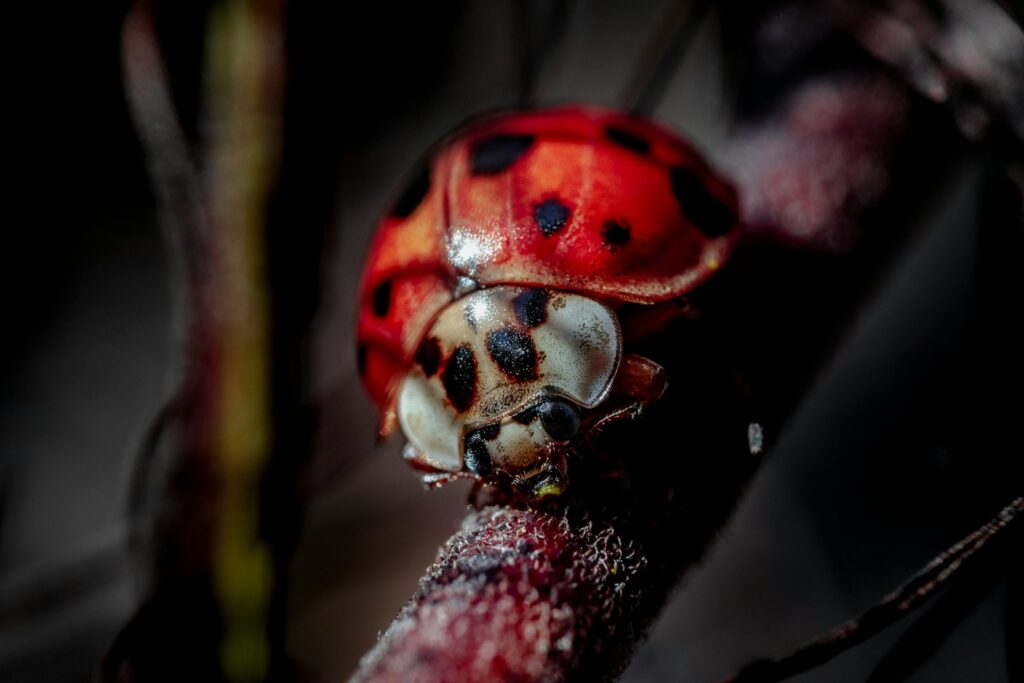
Lady beetles, commonly known as ladybugs, stand out as some of the most recognizable and effective biological control agents in both natural and agricultural ecosystems. A single adult ladybug can consume up to 5,000 aphids during its lifetime, making these colorful beetles invaluable allies for gardeners and farmers battling aphid infestations. Both the adults and larvae are voracious predators, with the alligator-like larvae often consuming more pests than their adult counterparts. Beyond aphids, many ladybug species also feed on scale insects, mealybugs, mites, and other soft-bodied pests that damage plants by sucking sap and transmitting plant diseases. Their effectiveness is so well-documented that commercial growers often purchase and release ladybugs as part of integrated pest management programs to protect crops without chemical pesticides.
Praying Mantis: Patient Ambush Hunters
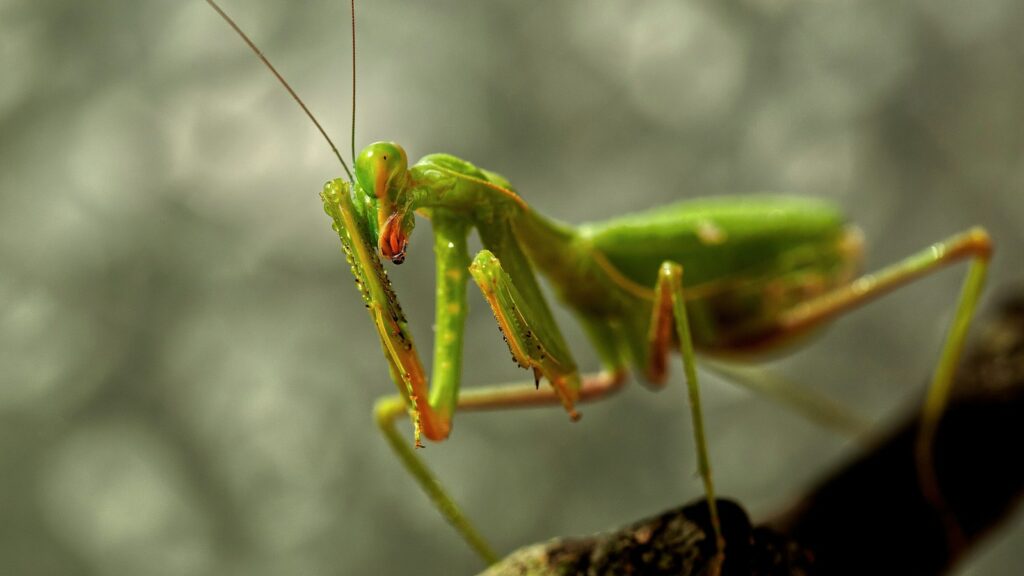
Praying mantids exemplify the ultimate ambush predators in the insect world, combining exceptional camouflage with lightning-fast strikes to capture unsuspecting prey. These distinctive insects can rotate their triangular heads nearly 180 degrees, providing them with binocular vision to accurately judge distances when striking. Using their specialized front legs equipped with rows of spines, mantids can snatch prey in as little as 50-70 milliseconds—faster than the human eye can follow. While mantids are generalist predators that consume beneficial insects alongside pests, their preference for eating moths, flies, crickets, and grasshoppers makes them valuable in controlling many agricultural pests. Their patient hunting style, sometimes remaining motionless for hours while waiting for prey, demonstrates how evolution has perfected predatory adaptations that require minimal energy expenditure while maximizing hunting success.
Dragonflies and Damselflies: Aerial Mosquito Hunters

Dragonflies and damselflies represent nature’s most efficient aerial predators, with hunting success rates reaching an astonishing 95% in some species—far exceeding the success rates of lions, tigers, or other mammalian predators. These agile insects begin their lives as aquatic nymphs, where they feed voraciously on mosquito larvae, helping control populations of these disease vectors before they can even emerge as adults. Once they transform into adults, dragonflies continue their mosquito-controlling mission in the air, with a single dragonfly capable of consuming hundreds of mosquitoes daily. Their exceptional flight capabilities, including the ability to hover, fly backward, and achieve speeds of up to 35 miles per hour, make them incredibly effective hunters. The compound eyes of dragonflies contain up to 30,000 individual facets, providing nearly 360-degree vision that allows them to detect the slightest movement of potential prey against complex backgrounds.
Ground Beetles: Nocturnal Pest Controllers

Ground beetles comprise one of the largest families of beetles, with over 40,000 known species worldwide that provide significant pest control services in soil ecosystems. These predominantly nocturnal hunters emerge after dark to prey upon slug eggs, cutworms, root maggots, wireworms, and many other soil-dwelling pests that damage crops from below. Unlike many predatory insects, ground beetles have chewing mouthparts that allow them to consume prey with hard exoskeletons or protective coverings that other predators might avoid. Many species have specialized mandibles that can crush the protective shells of snails or slice through the tough cuticle of caterpillars. Research has shown that fields with healthy ground beetle populations can experience up to 40% fewer pest outbreaks, highlighting their importance in agricultural settings. Farmers can encourage ground beetle populations by using no-till practices and maintaining ground cover that provides daytime shelter for these beneficial insects.
Assassin Bugs: Stealthy Killers with Chemical Weapons

Assassin bugs represent nature’s equivalent of highly specialized covert operatives, employing both stealth and chemical warfare to subdue prey much larger than themselves. These remarkable predators inject lethal saliva containing powerful digestive enzymes that liquefy their prey’s internal tissues, allowing the assassin bug to extract nutrients through its straw-like rostrum. With over 7,000 species worldwide, assassin bugs target an impressive range of agricultural pests, including caterpillars, beetles, aphids, and leafhoppers. One fascinating hunting strategy employed by certain assassin bug species involves covering their bodies with debris or the carcasses of previous victims to disguise their approach when stalking prey. Unlike some beneficial predators that may avoid chemically-defended prey, many assassin bugs have evolved immunity to the toxic compounds in pests like Colorado potato beetles, making them effective against these otherwise protected pest species.
Lacewings: Voracious Aphid Predators
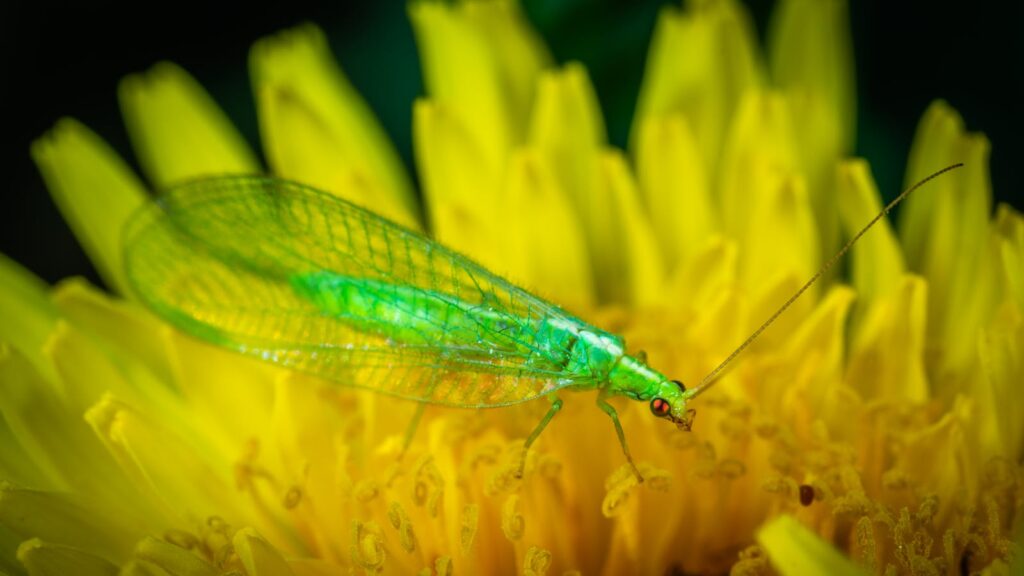
Lacewings represent one of the most valuable insect predators in garden and agricultural settings, with larvae so voracious they’ve earned the nickname “aphid lions” for their prodigious appetite. A single lacewing larva can consume up to 200 aphids or other small pests per week, systematically hunting along plant stems and leaves with specialized hollow mandibles that inject digestive enzymes into prey. The lacewing life cycle illustrates a fascinating evolutionary adaptation—adults of many species feed only on nectar and pollen, but they produce carnivorous offspring that serve as aggressive pest controllers. Green lacewing females employ an ingenious strategy to protect their eggs from cannibalism by placing each egg at the end of a thin silk stalk elevated above the leaf surface, ensuring their offspring don’t consume each other before finding pest prey. Commercial insectaries now mass-produce lacewing eggs for release in greenhouses, orchards, and fields as part of sustainable pest management programs.
Predatory Wasps: Specialized Pest Parasitoids
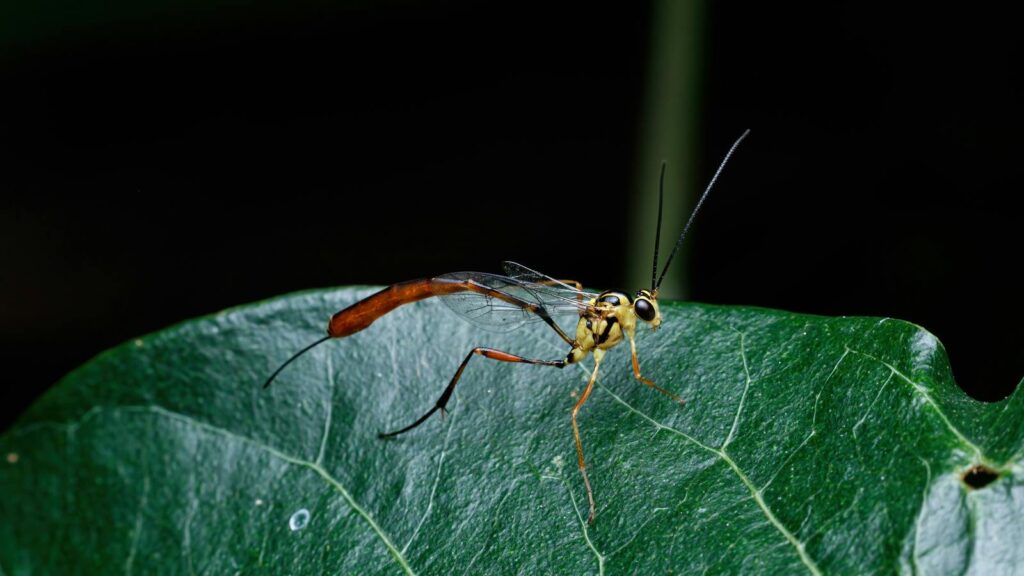
Unlike social wasps that form colonies, most predatory wasp species lead solitary lives as highly specialized hunters and parasitoids that target specific pest species with surgical precision. These beneficial wasps have evolved remarkable adaptations to locate their preferred prey, often detecting chemical cues released by plants under pest attack or sensing the vibrations made by concealed larvae inside plant tissues. Many predatory wasps serve as external parasitoids, stinging and paralyzing prey like caterpillars before dragging them to underground nests as living food for their developing offspring. Others function as internal parasitoids, using specialized ovipositors to inject eggs directly into host insects, where the wasp larvae develop by consuming the host from within—a gruesome but effective pest control strategy. The incredible specificity of many parasitoid wasps makes them ideal for targeted biological control, as they often attack only particular pest species while leaving beneficial insects untouched, a level of precision impossible with broad-spectrum chemical insecticides.
Aquatic Predators: Controlling Mosquito Larvae
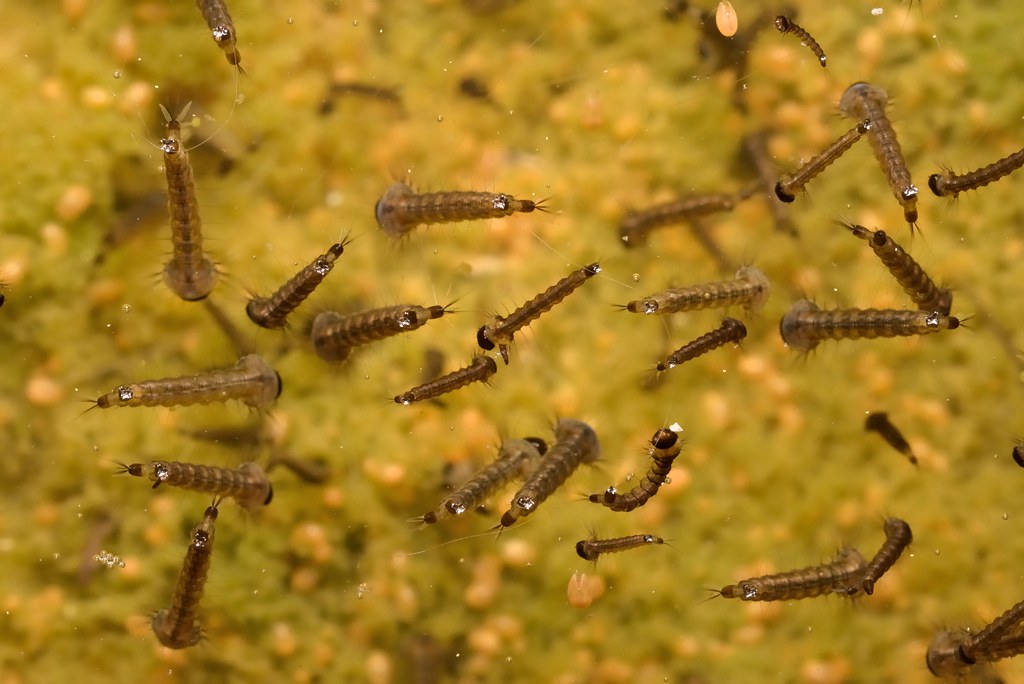
Water bodies serve as breeding grounds for mosquitoes and other disease vectors, but they also harbor diverse carnivorous insects that function as critical biological control agents in aquatic environments. Predaceous diving beetles, water scorpions, giant water bugs, and backswimmers form an underwater arsenal of predators that consume mosquito larvae before they can develop into biting adults. The larvae of predaceous diving beetles, known as water tigers, are particularly efficient mosquito controllers, using hollow, sickle-shaped mandibles to inject digestive enzymes into prey and then extract the liquefied tissues. Backswimmers hunt upside-down beneath the water surface, detecting the slightest movements of mosquito larvae and striking with remarkable speed and accuracy. These aquatic predators collectively prevent the emergence of millions of potential disease vectors daily, providing an essential public health service in wetlands, ponds, and even temporary water bodies like rain-filled containers. Research has shown that maintaining healthy populations of these predators can reduce mosquito emergence by up to 95% in some habitats, highlighting their importance in disease prevention.
Ants: Collective Hunting Forces

Ants represent nature’s most organized and industrious insect predators, with colony members working cooperatively to locate, subdue, and transport prey many times their individual size. While some ant species can become pests themselves, many serve as important biological control agents that constantly patrol vegetation and soil for caterpillars, beetle larvae, termites, and other destructive insects. Weaver ants in tropical orchards have been used as biological control agents for over 1,700 years, protecting fruit trees from pests through their aggressive territorial behavior and constant hunting. Studies in mango orchards have shown that trees patrolled by weaver ant colonies produce up to 50% more marketable fruit than trees without ant protection. Unlike solitary predators, ant colonies can sustain predation pressure continuously throughout the growing season, with millions of individual hunters searching every crevice and surface in their territory for potential prey. The collective hunting strategy of ants enables them to overcome prey defenses that might deter individual predators, making them particularly effective against larger or chemically-protected pest species.
Firefly Larvae: Subterranean Slug Hunters
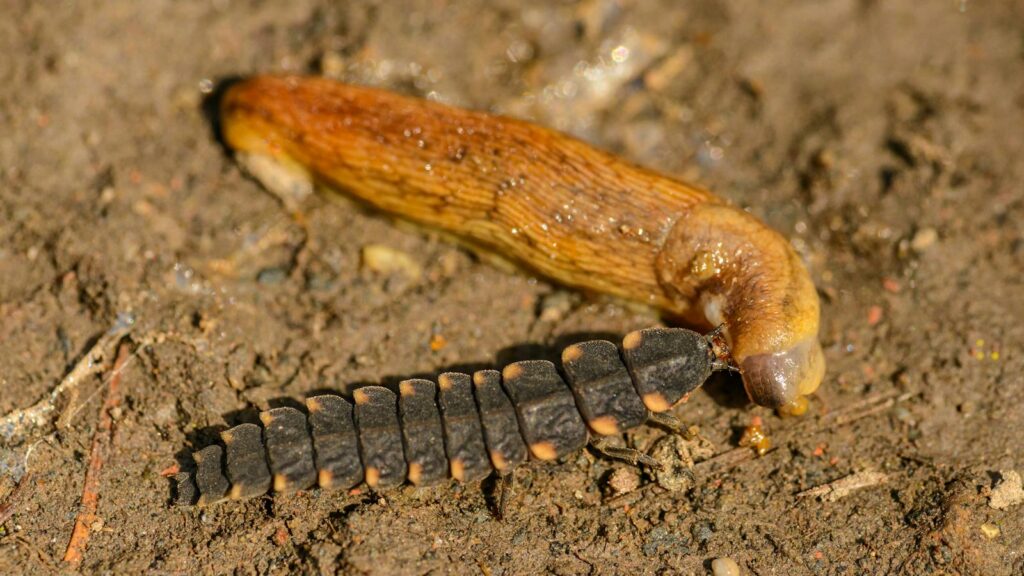
While adult fireflies capture our imagination with their bioluminescent displays, their larvae lead secretive lives as voracious predators in soil and leaf litter, specializing in controlling slugs, snails, and other soft-bodied pests. These elongated, flattened larvae, sometimes called “glowworms,” inject powerful digestive enzymes into their prey, liquefying the internal tissues before consuming them. Unlike many predatory insects with generalist diets, firefly larvae have evolved specialized hunting techniques specifically for gastropods, following slime trails to locate slugs and snails that damage garden plants. The bioluminescence that appears in both larval and adult stages serves different purposes—in larvae, it functions as a warning signal to potential predators advertising their unpalatability, while in adults it facilitates mate location. By controlling slug populations, firefly larvae provide a valuable service to gardeners and farmers, as slugs can cause extensive damage to seedlings, strawberries, leafy greens, and other crops, especially during wet seasons when slug populations typically explode.
Rove Beetles: Tiny but Efficient Predators
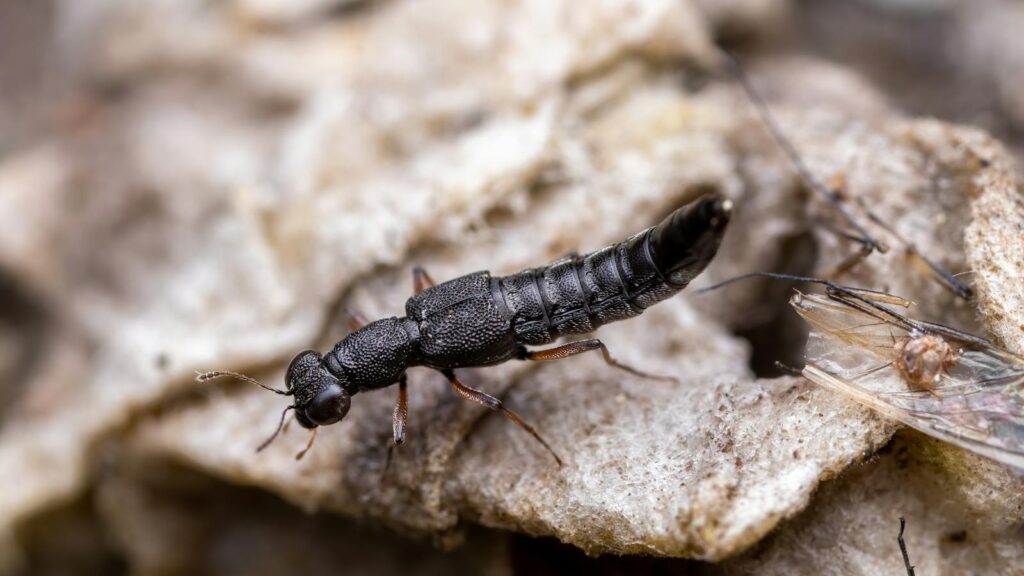
Rove beetles may be small and often overlooked, but these agile predators with their characteristically short wing covers and flexible abdomens represent one of the largest beetle families, with over 63,000 species worldwide providing substantial pest control services. Many rove beetle species specialize in hunting fungus gnat larvae, thrips, root aphids, and other small pests in soil or decomposing organic matter, making them particularly valuable in greenhouse production and mushroom cultivation. Unlike beetles that rely primarily on vision to locate prey, rove beetles use highly developed chemical receptors to detect prey through scent, allowing them to hunt effectively in dark, confined spaces where visual hunters would struggle. Some rove beetle species have developed mutualistic relationships with farmers—not human farmers, but leaf-cutter ants, which tolerate the beetles in their fungus gardens because they prey upon pest flies that would otherwise contaminate the ants’ fungal crops. Commercial producers now rear certain rove beetle species for release in greenhouse operations as part of integrated pest management programs targeting fungus gnats and shore flies.
Economic Value of Insect Predators in Agriculture

The pest control services provided by carnivorous insects represent an enormous economic benefit to global agriculture, with conservative estimates valuing these ecosystem services at over $50 billion annually in the United States alone. When pest populations are naturally regulated by predatory insects, farmers can significantly reduce insecticide applications, lowering production costs while minimizing risks to human health and non-target organisms. Research comparing conventional farms with those implementing habitat management to support beneficial insect populations has documented yield increases of 10-30% in the latter, along with substantial reductions in pest damage and pesticide costs. Beyond the direct economic benefits, carnivorous insects also provide invaluable insurance against pest resistance to chemical controls, as biological control agents can adapt and evolve alongside their prey, maintaining effectiveness where pesticides might eventually fail. The recognition of these ecological and economic benefits has driven increased adoption of conservation biological control practices, where farmers deliberately manage landscapes to maximize natural enemy populations rather than relying primarily on purchased inputs for pest management.
Supporting Beneficial Predatory Insects in Gardens and Farms
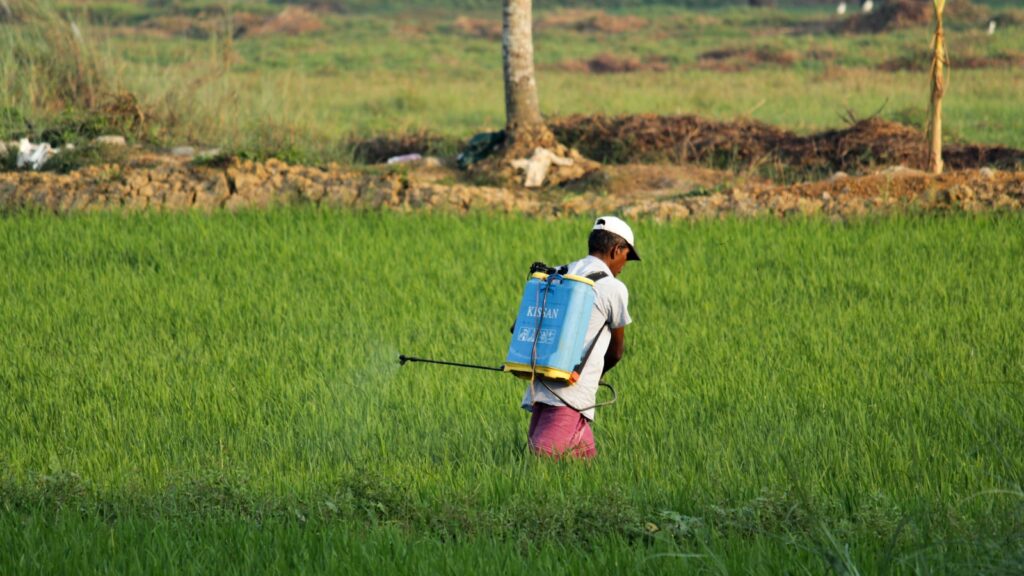
Gardeners and farmers can enhance natural pest control by implementing practices that protect and support predatory insect populations throughout the growing season. Providing habitat diversity through hedgerows, flower strips, cover crops, and undisturbed areas creates essential resources for beneficial insects, including alternative prey during pest scarcity, nectar sources for adults, and overwintering sites. Reducing or eliminating broad-spectrum insecticide use is perhaps the most important step in conserving beneficial insect populations, as many predatory species are more susceptible to these chemicals than their pest prey, leading to the phenomenon of pest resurgence after chemical treatments eliminate natural enemies. Water sources, such as shallow dishes with stones providing landing spots, support predatory insects during dry periods when dehydration might otherwise limit their activity and hunting efficiency. Thoughtful plant selection can further enhance biological control, as certain flowering plants like sweet alyssum, buckwheat, and dill are particularly effective at attracting and sustaining adult predatory insects that require nectar and pollen to fuel their hunting activities and reproductive efforts.
Conclusion

Carnivorous insects represent nature’s sophisticated answer to pest control—a complex, interconnected system of specialized predators that has evolved over millions of years to maintain ecological balance. From the soil-dwelling ground beetles that hunt cutworms to the aerial acrobatics of dragonflies capturing mosquitoes in flight, these beneficial insects provide continuous pest suppression services across virtually all terrestrial and freshwater habitats. As we face increasing challenges from pesticide resistance and concerns about chemical impacts on human health and the environment, supporting and harnessing the power of these natural pest controllers becomes increasingly important. By understanding and protecting beneficial predatory insects, we can work with nature rather than against it, creating more resilient, productive, and sustainable agricultural systems while reducing our dependence on synthetic pest control methods.
